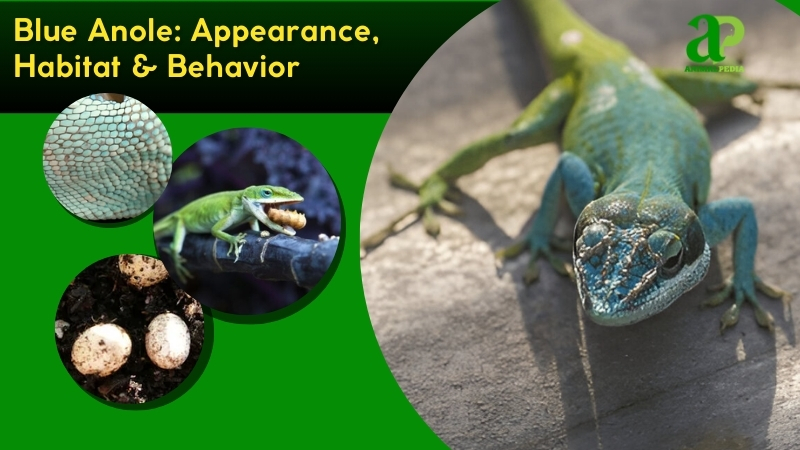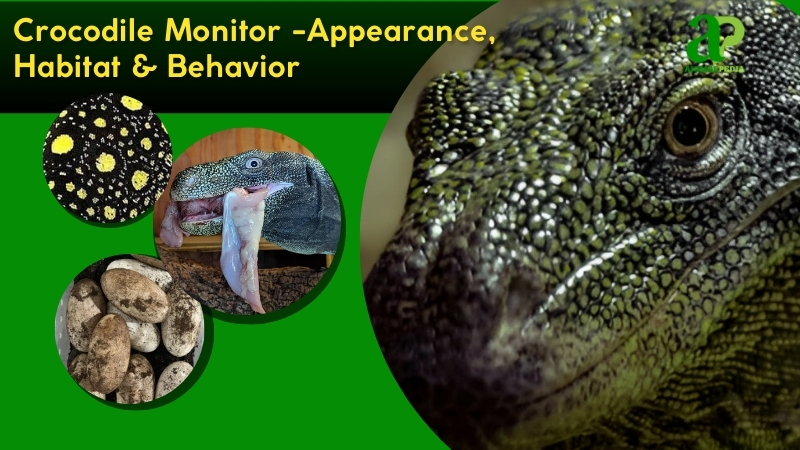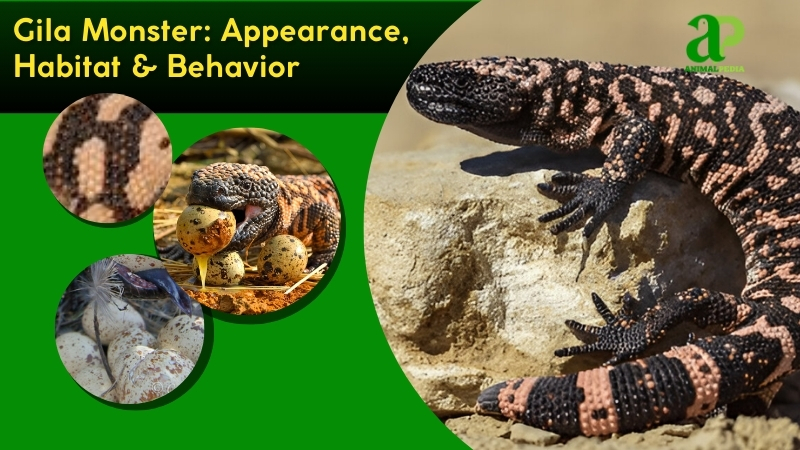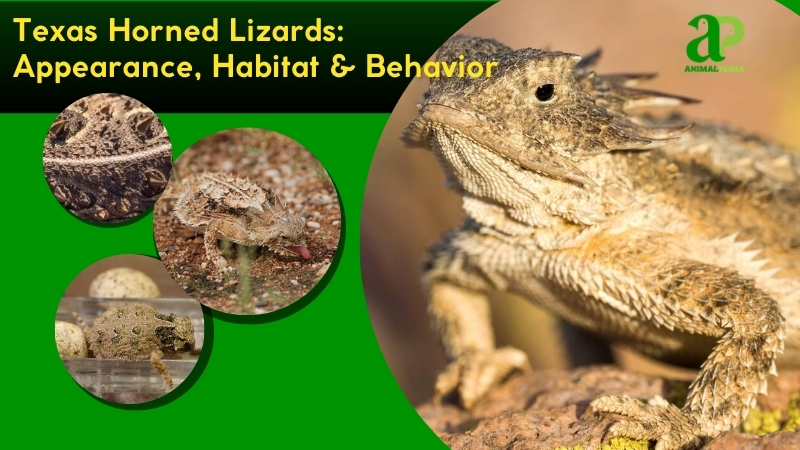The Sungazer, scientifically known as Smaug giganteus, is also commonly referred to as the giant dragon lizard or the sungazer lizard. This iconic lizard species is native to the grasslands of South Africa, particularly the Highveld region. What sets the sungazer apart is its impressive size, with adults reaching lengths of up to 30 inches, making them one of the largest lizard species in their habitat.
As apex predators, sungazers play a vital role in their ecosystem, preying on various small mammals, insects, and even other lizards. Their hunting behavior is characterized by stealth and patience, often stalking their prey before launching a swift attack. Sungazers exhibit diet specialization, with a preference for specific prey types such as mole rats and other burrowing creatures. Unfortunately, human interaction poses a threat to sungazers, as habitat destruction and illegal collection for the pet trade endanger their populations.
During the mating season, which typically occurs in the spring, female sungazers lay clutches of eggs in carefully constructed underground burrows. The incubation period for the eggs lasts around 3 to 4 months before the hatchlings emerge. Young sungazers exhibit cautious behavior and rely on their instincts to navigate their environment.
It takes several years for them to reach maturity, with a lifespan of around 15 to 20 years in the wild.
Discovered by Western science in the early 19th century, sungazers are currently listed as a vulnerable species due to habitat loss and illegal collection. Conservation efforts aim to protect their natural habitats and raise awareness about the importance of preserving these unique lizards in their native ecosystem.
Despite the challenges they face, sungazers continue to captivate researchers and enthusiasts alike with their behaviors and characteristics.
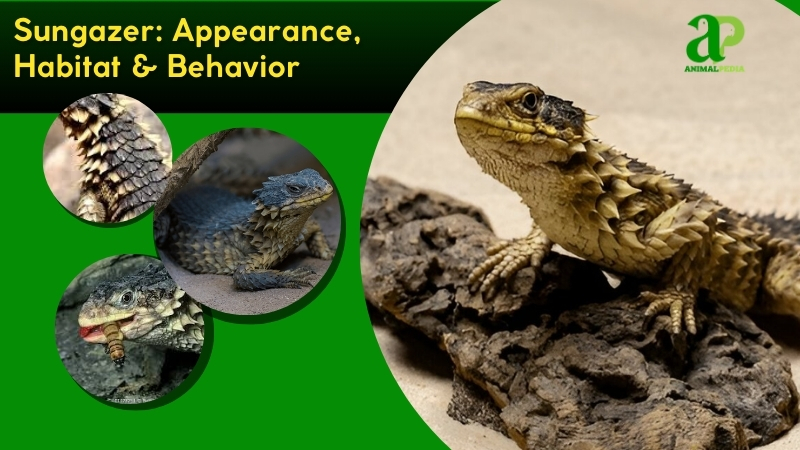
What does the Sungazer look like?
The Sungazer is a large, robust lizard with a body that typically measures around 40-60 cm in length. Its general shape is stocky, with a rounded, shield-like head and a thick, muscular body. The skin of this lizard is covered in tough, diamond-shaped, overlapping scales, offering both protection and camouflage. The overall color is a mix of earthy browns and grays, with patterns of lighter and darker patches that help this lizard blend into rocky, arid environments. The scales are rough in texture, enhancing its defense against predators and the harsh elements of its habitat.
The head of the Sungazer is large and triangular, with prominent, small eyes adapted for keen vision. Its tongue is long and forked, used for scent detection. The neck is short, leading into a broad, sturdy body that provides excellent support for its limbs. The legs are strong, equipped with sharp claws for digging burrows, while the tail is thick and muscular, often used for balance.
Compared to similar species like the Leopard Tortoise or other armored lizards, the Sungazer stands out due to its larger size, bulkier body, and distinctive, more heavily armored scales. Its rough, spiny appearance also sets it apart from the sleeker, smoother-skinned tortoises, offering more obvious protection from potential predators.
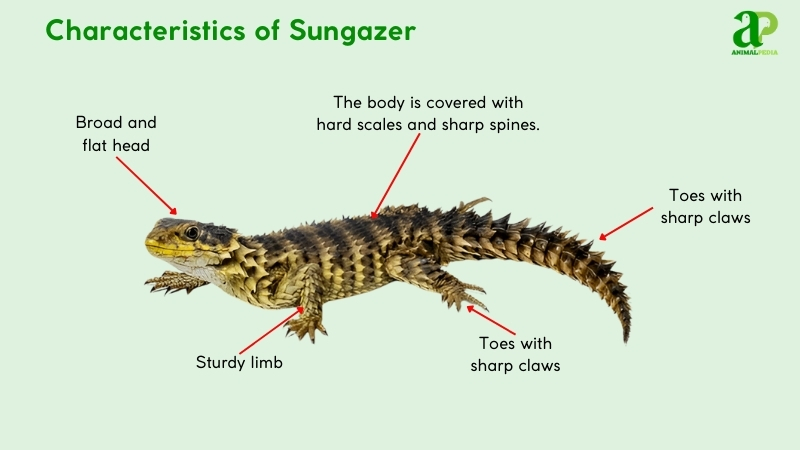
How big do Sungazer get?
The average length of a Sungazer is between 1.3 to 2 feet (40 to 60 cm), and they typically weigh between 1.5 to 2.4 lbs (0.7 to 1.1 kg). The largest recorded Sungazer was found in the Kalahari Desert, measuring 2.3 feet (70 cm) and weighing approximately 3.3 lbs (1.5 kg). This was documented in a 2012 study by researchers from the University of Pretoria, based on field observations.
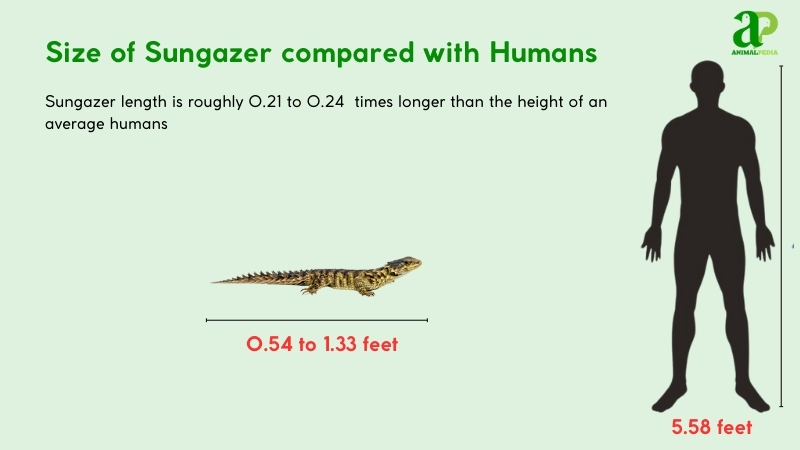
Adult Sungazers generally reach a length of 50 cm (1.6 feet) from snout to tail. Males are usually smaller, averaging around 45 cm, while females tend to be slightly larger, reaching 55 cm in length. Females also weigh more, typically between 1.0 to 1.2 kg, whereas males are closer to 0.7 kg.
| Gender | Length (ft) | Weight (lbs) |
| Male | 1.5 ft | 1.5 lbs |
| Female | 1.8 ft | 2.2-2.6 lbs |
Anatomy
The Sungazer is a species with specialized physiological systems that allow it to thrive in harsh, arid environments:
- Respiratory System: The Sungazer has a simple, single-chambered lung, but its gas exchange system is highly efficient for its low-energy lifestyle. This adaptation suits the species, as it spends much of its time in burrows or under rocky cover, moving slowly.
- Circulatory System: Like most classification of reptiles, the Sungazer has a three-chambered heart. While less efficient than a four-chambered heart, it is adequate for delivering oxygen throughout its body during the occasional bursts of activity required for feeding or defense. This system supports its low metabolism and sporadic movements.
- Digestive System: The Sungazer’s digestive system is designed for processing a diet that consists mostly of insects, small invertebrates, and some plant matter. It has a simple, short gut that efficiently handles its infrequent meals, and its stomach can break down tough, fibrous plant material.
- Excretory System: The Sungazer’s kidneys excrete nitrogenous waste in the form of uric acid rather than urea, which conserves water. This is crucial in the desert-like habitats it occupies, allowing the lizard to survive on minimal water.
- Nervous System: The Sungazer has well-developed sensory capabilities, particularly in vision. Its sharp claws and spiny tail serve as important defensive mechanisms when threatened, offering protection in its rocky and arid environment.
These specialized systems ensure the Sungazer’s survival in its unique habitat, offering a perfect balance of energy efficiency and protection.
Where do Sungazer live?
The Sungazer is native to southern Africa, specifically concentrated in the arid, rocky regions of the Kalahari Desert and parts of South Africa, including the Northern Cape province. It is primarily found in scrublands, savannas, and semi-desert areas, where it inhabits burrows in sandy, loose soils or under rocky outcrops. These habitats offer ample shelter and a relatively stable temperature, both critical for the species’ survival.
These environments are well-suited to the Sungazer due to their dry conditions and the availability of insect prey. The lizard’s tough, armored body and burrowing behavior help it survive the harsh conditions. Studies, including research by the University of Pretoria (2012), indicate that the Sungazer has been present in these regions for millions of years and does not migrate, largely stationary within its local range to avoid extreme temperature fluctuations.

How do seasonal changes affect their behavior?
The Sungazer exhibits unique behavioral patterns, primarily influenced by the harsh, dry conditions of its southern African habitat. Unlike many reptiles, it does not exhibit drastic seasonal changes but adapts to temperature fluctuations and food availability throughout the year.
- Dry Season (May-October)
During the dry season, the Sungazer reduces its activity, spending more time in its burrow to conserve energy. It minimizes movement and may go without food for extended periods, relying on fat reserves. The lizard’s activity is limited, and it only emerges to bask for short periods to maintain a body temperature of around 30-35°C. This period also marks the mating season, with males engaging in territorial behavior and competing for females.
- Rainy Season (November-April)
In the rainy season, the Sungazer becomes more active, emerging from its burrow more frequently to forage for food, particularly insects and plant matter. With cooler temperatures and higher humidity, the species has increased access to prey. However, they focused on maintaining their energy levels, foraging within a limited range of 1-2 km. The rainy season also provides optimal conditions for the Sungazer’s slow growth and survival, with more consistent food sources.
What is the behavior of Sungazer?
The Sungazer is a fascinating reptile with unique behaviors and adaptations:
- Diet: Omnivorous, primarily feeding on insects and small invertebrates. It also consumes some plant material, with its diet consistent throughout its life.
- Hunting Mechanisms: Sungazers hunt by using their sharp claws and quick reflexes to capture prey. They often motionless, blending into their environment until the moment to strike.
Daily Activity Patterns: Most active in the cooler early morning and late afternoon, when they bask in the sun to regulate body temperature. - Locomotion Capabilities: Sungazers have a waddling gait on land and are capable swimmers, using their flattened tails for propulsion in water.
- Social Structure: Solitary animals, they prefer to live alone and only come together during mating season.
- Communication: They communicate through body language and pheromones, marking territory or signaling reproductive status.
What do Sungazer eat?
The Sungazer is an omnivorous reptile, primarily feeding on a diet of insects, small invertebrates, and plants. It uses its strong limbs and claws to dig for burrowing insects, and its forked tongue helps detect food through scent. Though it occasionally eats plant material like roots and leaves, its primary feeding strategy revolves around insectivory. Sungazers do not typically hunt larger animals and are not considered aggressive predators.
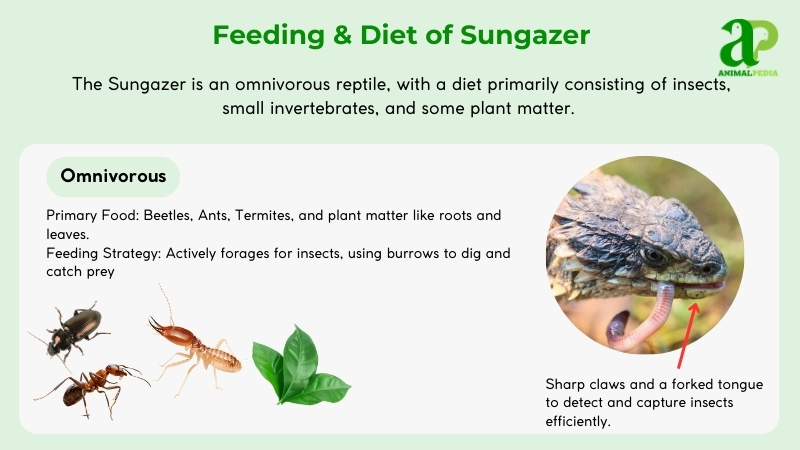
Diet by age
Sungazers exhibit some dietary shifts as they mature, though their food preferences relatively consistent throughout life.
- Hatchlings (0-1 Year)
Hatchlings feed primarily on small insects like ants, beetles, and termites. They are also known to consume plant material when available. These small, easily digestible food sources support their early growth. - Juveniles (1-3 Years)
Juveniles start incorporating larger insects and small arthropods, along with occasional plant matter. They may also begin scavenging for dead insects or small invertebrates in their environment. - Adults (3+ Years)
Fully grown Sungazers primarily consume insects, beetles, ants, and other arthropods. Their diet may also include small amounts of roots, seeds, or leaves, depending on availability.
Diet by gender
There are no significant differences in feeding behaviors between male and female Sungazers. Both sexes focus on insects and plant matter, using their burrowing behavior to forage.
Diet by seasons
Sungazers do not exhibit significant seasonal dietary changes, as they opportunistic feeders year-round, adjusting based on food availability.
How do Sungazers hunt their prey?
Sungazers are skilled predators, using their sharp claws and quick reflexes to capture their prey. When searching for food, Sungazers rely on their sharp vision to spot the movements of insects scuttling across the desert terrain. They then swiftly lunge at their prey, efficiently dispatching them with precise bites from their powerful jaws.
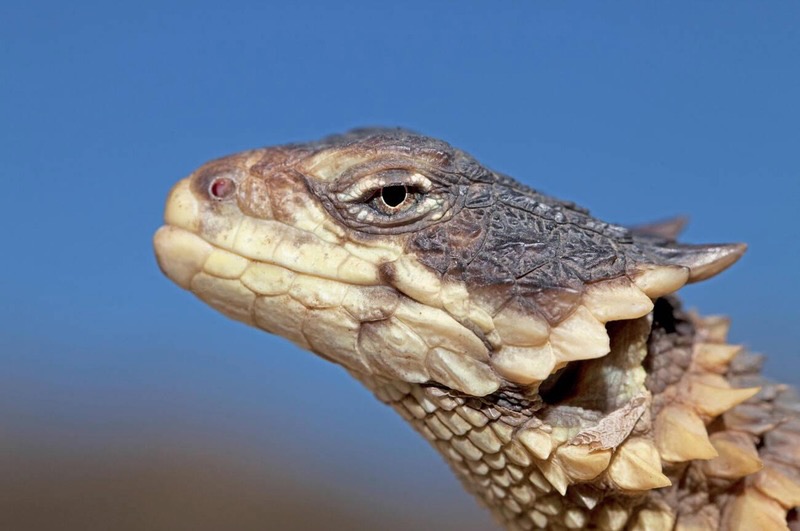
A distinct hunting tactic of Sungazers lies in their ability to motionless for extended periods, blending seamlessly with their surroundings until the ideal moment to strike. This stealthy approach helps them surprise their prey, ensuring a successful hunt.
Their patient and strategic hunting style showcases their adaptability to the harsh desert conditions they live in.
Next time you observe a Sungazer soaking up the sun, remember the exceptional predator lurking behind its tranquil exterior, always prepared to spring into action unexpectedly.
Are Sungazer venomous?
Sungazers exhibit interesting behaviors that may lead one to wonder about their venomous nature. The surprising truth is that Sungazers aren’t venomous; however, they display captivating behaviors for defense. When faced with danger, these lizards will attempt to flee first. If escape isn’t feasible, they inflate their bodies to appear more formidable and use their sharp claws for protection if necessary.
Known for their solitary lifestyle, Sungazers come together only during the breeding season. They’re skilled burrowers, constructing intricate tunnels underground where they spend a significant amount of time.
Their unique behavior includes regulating body temperature by basking in the sun or retreating into their burrows. Although Sungazers lack venom, their behavior truly in the animal kingdom.
When are Sungazer most active during the day?
When considering the behavior of Sungazers during the day, their activity levels are influenced by the temperature of their surroundings. These reptiles are most active in the early morning and late afternoon when the temperatures are cooler. During these times, Sungazers come out of their burrows to sunbathe, absorbing the warmth they need to sustain themselves.
As the day grows warmer, they retreat to shady spots or underground to prevent overheating. By adjusting their activity to match temperature changes, Sungazers effectively manage their energy levels. This behavior allows them to maximize their opportunities to hunt for food and mate without risking heat-related stress.
Observing Sungazers’ daily routines sheds light on how they adapt and thrive in their environment. By being active during the cooler parts of the day, these fascinating creatures demonstrate their ability to navigate their surroundings successfully.
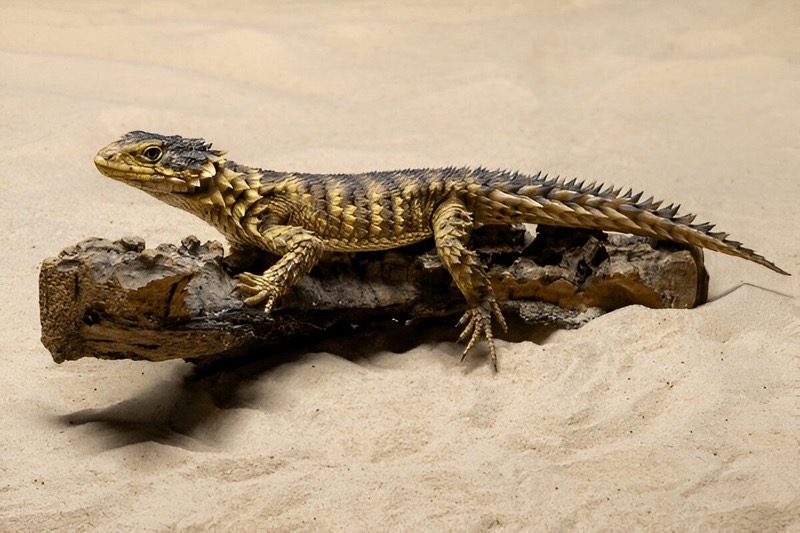
How do Sungazer move on land and water?
Sungazers exhibit unique behaviors as they navigate both land and water. On land, they have a distinctive waddling gait, using their strong limbs to move with a side-to-side motion. This method helps them navigate sandy terrain in arid habitats, allowing them to search for food and shelter effectively.
In water, Sungazers showcase impressive swimming skills despite being primarily terrestrial creatures. Their flattened tails help propel them through the water with agility when needed, demonstrating their adaptability to different environments.
These abilities highlight the Sungazer’s versatility in thriving across various habitats, making their movements on land and in water a fascinating sight that showcases their evolutionary adaptations.
Do Sungazer live alone or in groups?
Sungazers typically lead solitary lives, establishing territories and foraging independently in their preferred habitats. These unique creatures choose to roam and hunt alone rather than in groups, allowing them to focus on finding food and defending their territory without the distractions of group dynamics.
While Sungazers may interact occasionally, especially during mating season, they generally prefer the freedom and independence of a solitary lifestyle.
By living alone, Sungazers can explore, hunt, and enjoy basking in the sun at their own pace, without the need to rely on or compete with others. This solitary behavior enables them to thrive in environments like grasslands or sandy areas, which they consider home.
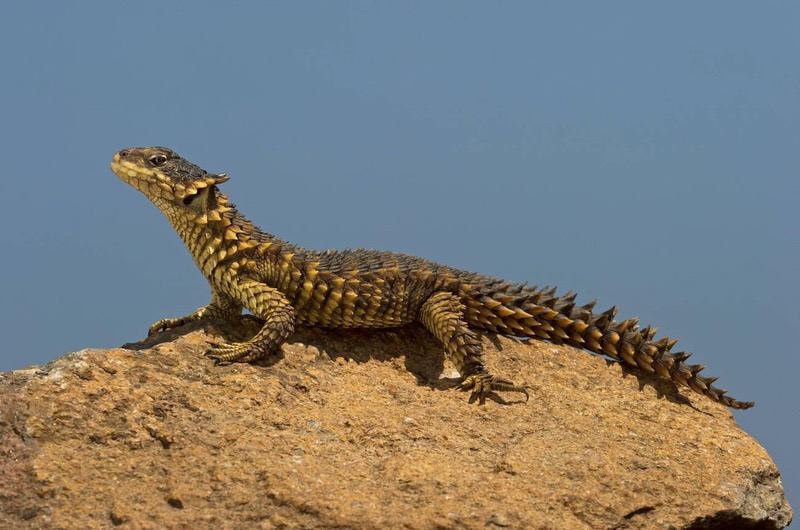
If you encounter a Sungazer in the wild, remember that they’re content in their own company and prefer the independence that comes with living life on their own terms.
How do Sungazer communicate with each other?
Exploring Sungazers in their natural habitat reveals how these creatures communicate with each other. While Sungazers are typically solitary, they display certain behaviors to interact when needed. One of their main communication methods is through body language, using specific movements and gestures to convey messages like marking territory or showing aggression.
Moreover, Sungazers make use of their sense of smell to communicate. They release pheromones that convey their presence, reproductive status, or warnings to other Sungazers nearby. This chemical communication is vital for their interactions with fellow individuals.
These communication strategies highlight the intricate behaviors of Sungazers, demonstrating how even solitary creatures can effectively convey messages when necessary. Witnessing these unique communication techniques in action among these elusive reptiles is truly extraordinary.
How do Sungazer reproduce?
The Sungazer exhibits sexual reproduction, with males and females mating during the breeding season. The breeding season typically begins in late spring to early summer, around November to December. During this period, males engage in competitive displays to attract females, often involving head bobbing, posturing, and gentle nudging with their snouts. These behaviors are a form of flirtation where males demonstrate their strength and suitability. Males may also perform a series of ritualized movements to court females. After mating, the female will begin to prepare for egg-laying.
The female lays 4 to 8 eggs after mating, with each egg weighing approximately 20-30 grams. The eggs are deposited in a burrow or hidden under rocks, where they are left to incubate. The female protects the nest by guarding the area, though she does not directly care for the eggs after laying. The male does not participate in guarding the eggs.
In rare cases, egg-laying can be interrupted, particularly by extreme environmental conditions such as severe drought or temperature fluctuations. The eggs take about 4 to 6 months to hatch, with hatchlings emerging around late summer to early fall. The young grow rapidly, feeding primarily on insects and small plant matter.
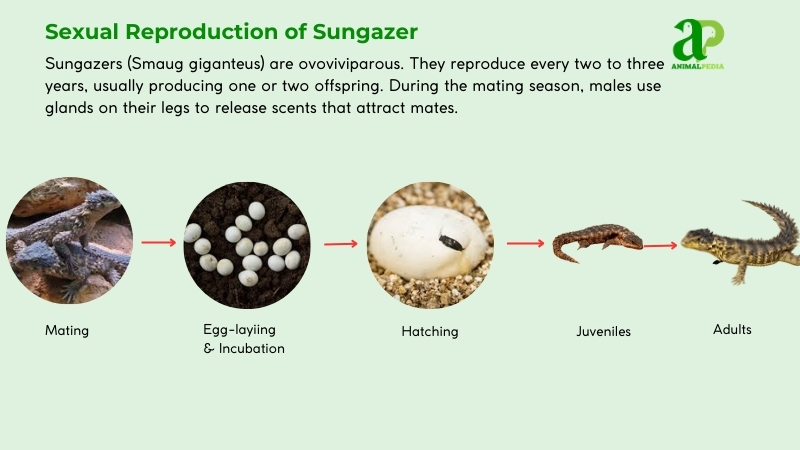
How long does Sungazer live?
In their natural habitat, Sungazers typically live for about 10 to 15 years. These reptiles reach maturity at 5 to 7 years old, engaging in courtship rituals before mating. Mating usually occurs in warmer months when Sungazers are more active.
Male Sungazers vie for female attention by displaying their brightly colored undersides and engaging in head-bobbing displays.
After successful mating, the female buries a clutch of 5 to 15 eggs in a carefully dug burrow, covering them with soil and debris for protection. These eggs take around 90 to 120 days to hatch, with the hatchlings emerging fully developed and ready to explore their surroundings.
Female Sungazers are known for their attentive parental care, sometimes near the nest to safeguard the hatchlings until they’re self-sufficient.
What are the threats or predators that Sungazer faces today?
The Sungazer faces several threats to its survival, with both natural and human-induced factors affecting its population:
- Habitat Destruction: The destruction of natural habitats, particularly due to agricultural expansion and urban development, poses a significant threat. As the land is cleared for farming or construction, Sungazer populations lose their shelter and food sources, leading to population decline.
- Illegal Trade: The Sungazer is highly sought after in the illegal pet trade due to its unique appearance. This has resulted in the capture of individuals from the wild, further reducing the already limited population.
- Climate Change: Climate change is causing temperature fluctuations and altering rainfall patterns, which disrupts the Sungazer’s delicate habitat. Extreme weather events can lead to egg failure or reduced food availability.
- Predation: Predators such as large birds of prey (eagles, hawks) and mammals (jackals, wild dogs) are natural threats. Hatchlings are particularly vulnerable to predation, as they are small and lack the defensive adaptations of adults.
- Invasive Species: Invasive predators, such as feral cats and dogs, increase the pressure on Sungazer populations. These species can outcompete or directly hunt Sungazers for food.
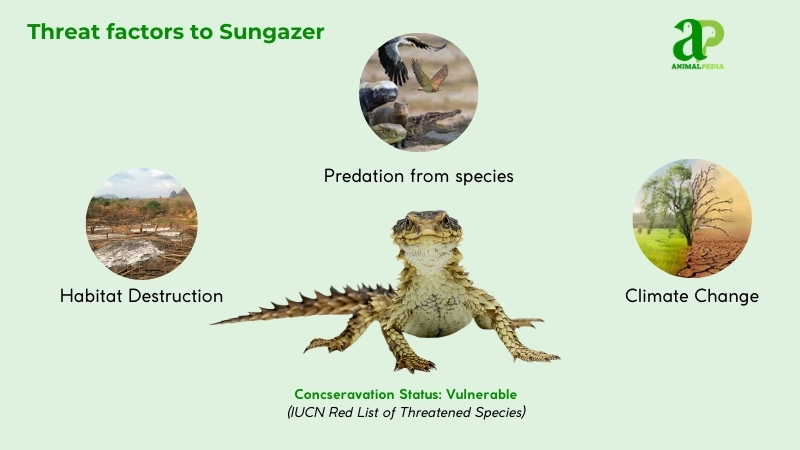
Human activities significantly impact Sungazer populations. Research by the University of Pretoria (2012) shows that habitat loss from agriculture and human settlement is the most pressing threat. The illegal collection for the pet trade, combined with these habitat disruptions, has led to a population decline, especially in areas where protection measures are insufficient.
Are Sungazers endangered?
Yes, the Sungazer is considered an endangered species. According to the International Union for Conservation of Nature (IUCN), the Sungazer is classified as Vulnerable (EN) on the Red List of Threatened Species. This classification is based on its declining population due to habitat loss, illegal trade, and other anthropogenic threats. The species is highly vulnerable, with its population scattered across fragmented areas in southern Africa.
Recent studies estimate that the Sungazer population has dwindled to less than 2,000 individuals in the wild, with specific numbers difficult to determine due to the species’ cryptic nature and remote habitat. Research from the University of Pretoria in 2012 indicated that the Sungazer’s population is declining due to continued habitat destruction and illegal collection for the pet trade. Conservationists emphasize that immediate protection measures are critical to prevent further population decline.
In addition to habitat loss, climate change and human encroachment are contributing to the species’ endangered status, requiring urgent conservation attention to safeguard its future.
What conservation efforts are underway?
Conservation efforts for the Sungazer have been ramped up in response to its endangered status, with key organizations working to protect the species and its habitats. The Endangered Wildlife Trust (EWT) and the University of Pretoria have played significant roles in monitoring Sungazer populations and promoting habitat conservation. These efforts began in the early 2000s and continue to this day, focusing on the Kalahari Desert and surrounding areas. Their work includes habitat restoration, anti-poaching measures, and conducting surveys to assess the health of populations.
In South Africa, the Sungazer is protected under the National Environmental Management: Biodiversity Act. This law makes it illegal to capture, trade, or export Sungazers without permits, with strict penalties for violations. Additionally, the Sungazer is listed under CITES Appendix II, ensuring international trade is closely regulated to prevent exploitation. These protections help mitigate threats from illegal trade and habitat destruction.
Successful captive breeding programs, such as those led by the South African Reptile Conservation Centre (SARCC), have been crucial for species recovery. Since the program’s inception, over 50 Sungazers have been bred in captivity. These individuals are often reintroduced into the wild, contributing to genetic diversity and population stabilization. In 2016, the first successful reintroduction of captive-bred Sungazers into their natural habitat was completed in the Kalahari, where they are now thriving. This marks a key milestone in the recovery of the species.
Frequently Asked Questions
Do Sungazers Hibernate During Certain Seasons?
Yes, sungazers do hibernate in certain seasons. It’s a natural cycle for them to conserve energy and survive harsh conditions. During this time, they burrow underground and slow down their metabolism until warmer weather returns.
Are Sungazers Legal to Own as Pets?
Yes, you can own sungazers as pets in some places, but always check your local laws. Remember, responsible pet ownership is essential. Make sure you provide the right environment and care for these fascinating reptiles.
Can Sungazers Change Color Like Chameleons?
Yes, they can! Sungazers, like chameleons, have the ability to change color. They use this skill for communication, regulating body temperature, and camouflage. It’s a fascinating trait that makes them even more interesting to observe!
Conclusion
The Sungazer is a fascinating lizard found in South African grasslands with a distinctive appearance and unique behaviors. From their intricate patterns of scales to their seasonal adjustments in activity, these reptiles have adapted effectively to their sandy burrowing habitats. With their sharp claws and defensive tactics, Sungazers face threats from predators, making their survival a compelling story of resilience in the wild. Keep exploring the world of Sungazers for more amazing discoveries!





